Mindful Sex made simple: breathwork, grounding, consent scripts, and sensate focus to ease anxiety, build trust, and deepen intimacy. SFW, evidence-based.

What Is Mindful Sex? (Mindful Sex Basics)
First, Mindful Sex means kind attention to your body, breath, and emotions. It is about being fully present. It trades the goal of performance for the simple act of curiosity. Moreover, it is always consent-first. This approach allows you to explore sensations without judgment. Therefore, it supports safety, builds trust, and fosters a steady, lasting connection. It’s an approach that can be applied to all forms of intimacy, from solo moments to partnered experiences.
Note: This is education, not medical advice. If you feel pain or distress, please speak to a qualified clinician.
Mindful Sex Benefits (Research)
The practice of mindfulness can be profoundly beneficial for your sexual well-being. Several studies suggest that mindfulness-based programs can lead to improvements in desire, arousal, lubrication, and overall sexual satisfaction. Consequently, distress can drop while comfort rises.
- Reduced Anxiety: By shifting focus from performance to presence, mindfulness helps ease anxiety and rumination.
- Increased Body Awareness: It teaches you to notice and appreciate physical sensations without judgment.
- Better Communication: Practicing mindfulness with a partner can open up new avenues for honest and direct communication about needs and desires.
- Enhanced Satisfaction: Research indicates that a mindful approach can increase overall satisfaction with sexual experiences.
Remember that results can vary. This practice is a tool to improve well-being and does not replace professional medical care or therapy. For more information, you can explore research from reputable sources like the National Library of Medicine.
Mindful Sex Models: Linear vs Responsive Desire (Basson)
Traditionally, many of us are taught a linear cycle of desire, where desire comes first, followed by arousal and then the sexual act. This model works for some, but not all.

Linear Cycle (classic)
Traditionally, people learn a linear cycle. However, responsive desire often grows after safety, warmth, and non-demand touch. The Basson circular model highlights context, closeness, and feedback loops. Therefore, a slow build can be normal and healthy.
Responsive Desire & Context (Basson model)
What changes is when we consider the Basson circular model. This model highlights responsive desire, where desire can arise after a period of safety, warmth, and non-demand touch. This means that for many people, desire is not a starting point, but rather a result of context and a slow build. The model is a loop of emotional closeness, sensual stimulation, and feedback. Therefore, a slow build to intimacy can be a normal and healthy part of your experience.
Mindful Sex Skills You Can Start Today
First, set a gentle pace. Next, try one short practice at a time. Finally, debrief and choose aftercare.
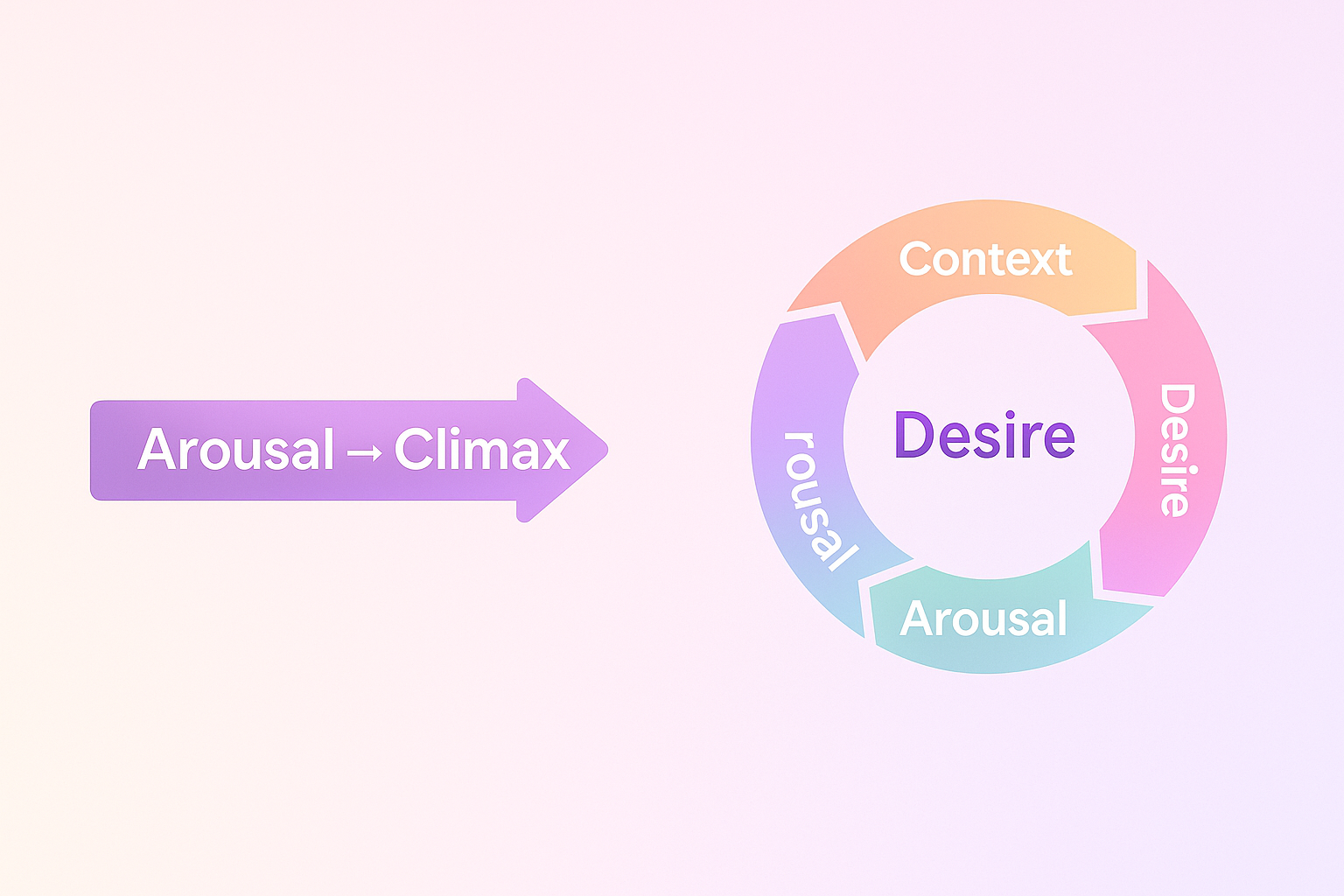
Mindful Sex Technique: 4-4-6 Breath (2–5 min)
Inhale 4. Hold 4. Exhale 6. Repeat. This lowers arousal anxiety and invites presence.
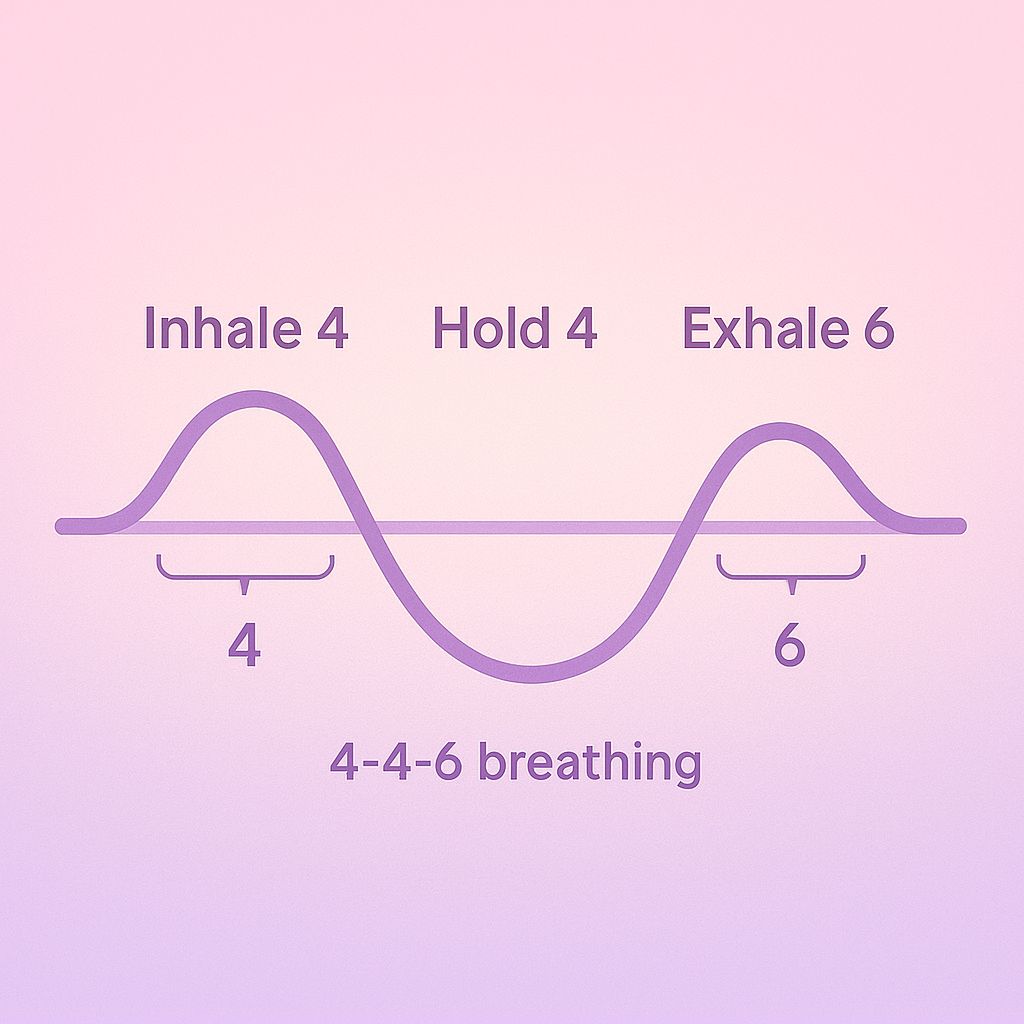
Mindful Sex Technique: 3-Minute Body Scan
From jaw to toes, soften each area by ~10%. Then, name three neutral or pleasant sensations. This simple step builds awareness fast.
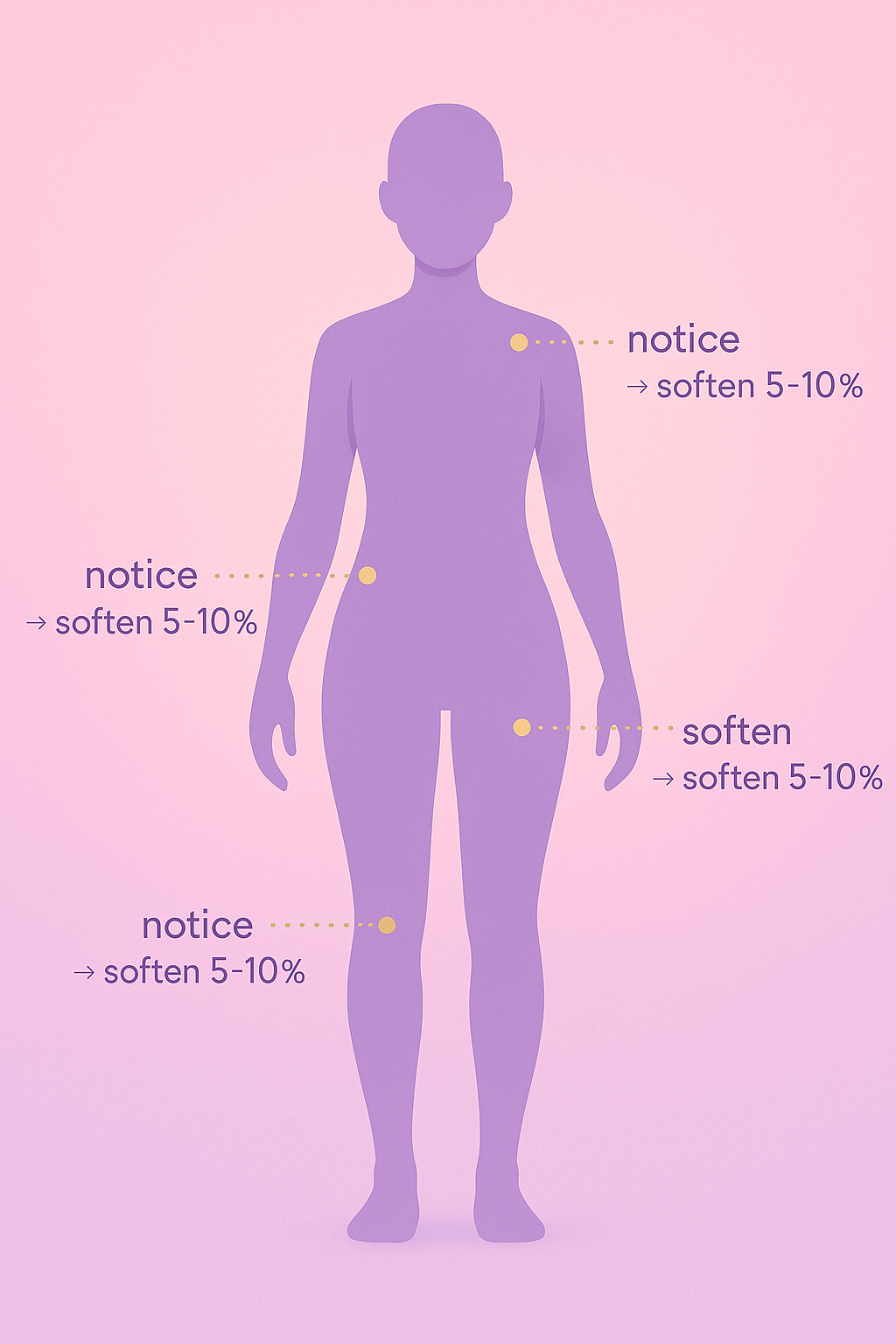
Mindful Sex Technique: 5-4-3-2-1 Grounding
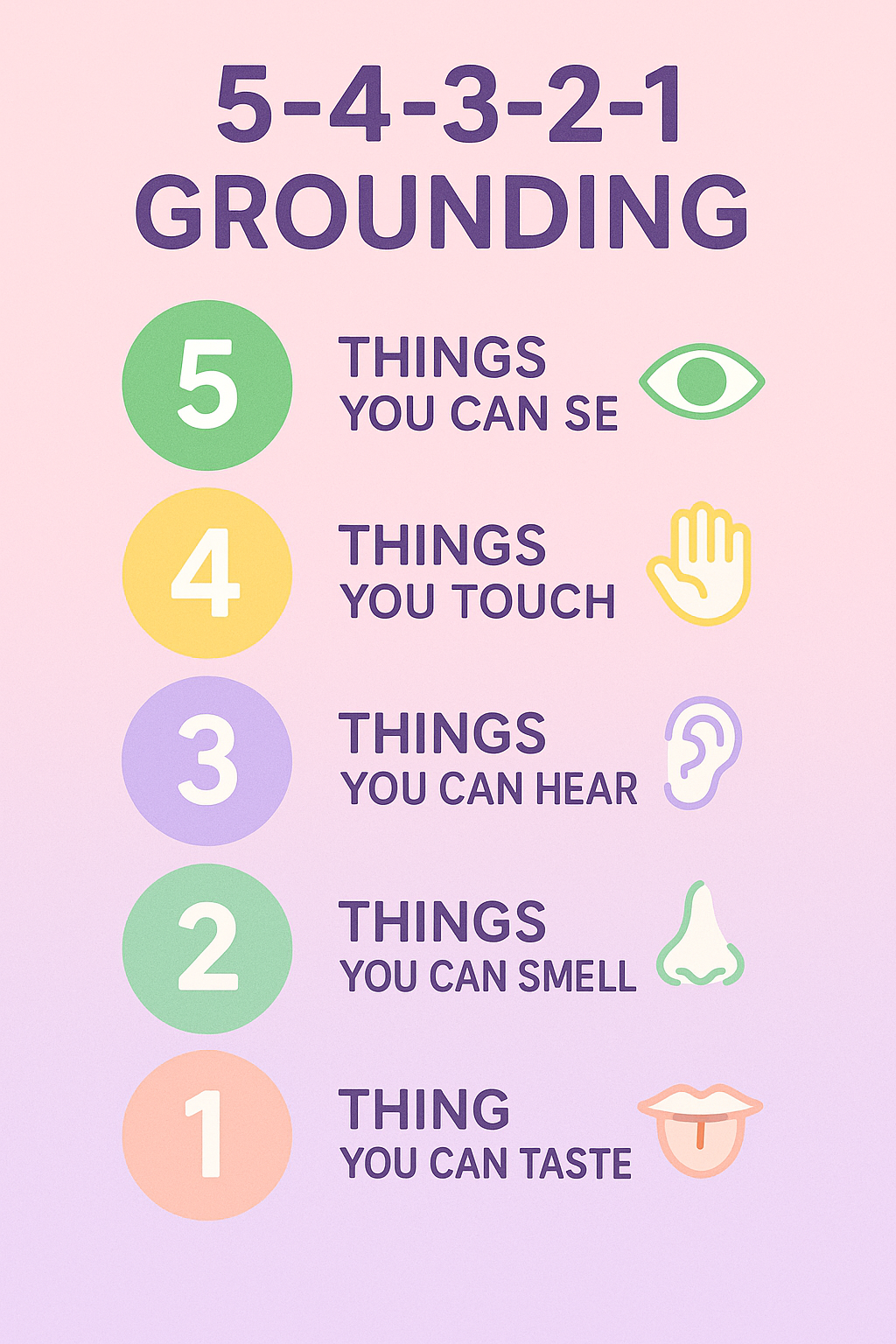
Notice five things you see. Then four you touch. Three you hear. Two you smell. One taste/breath. Consequently, your mind settles.
Mindful Sex Technique: Touch Ladder (SFW)
Start with Tier A hands/arms/shoulders. Move to Tier B back/legs. Proceed to opt-in areas only with an explicit yes. Pause anytime.
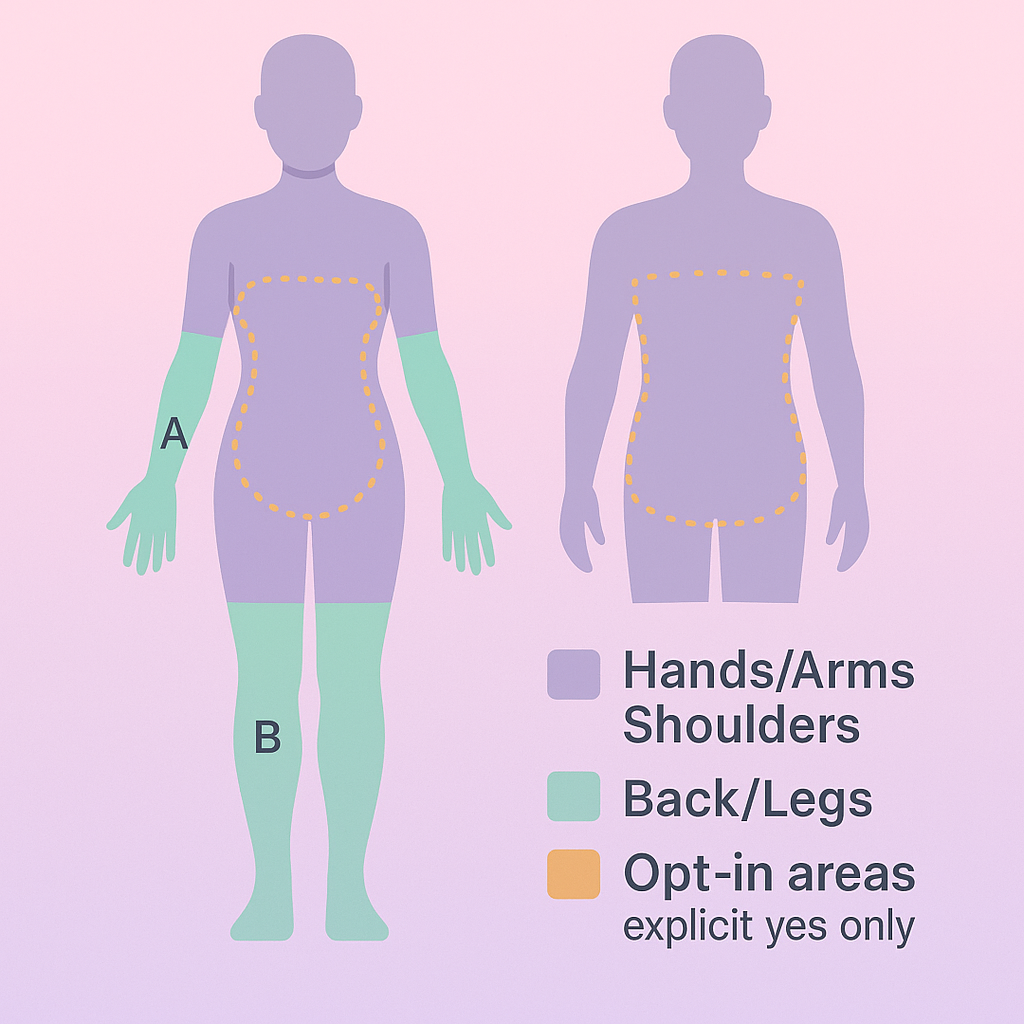
Mindful Sex Technique: Two-Minute Check-In
Ask “Green, Yellow, or Red?”
- Green: continue or explore.
- Yellow: slower, lighter, or different focus.
- Red: stop and switch to comfort.
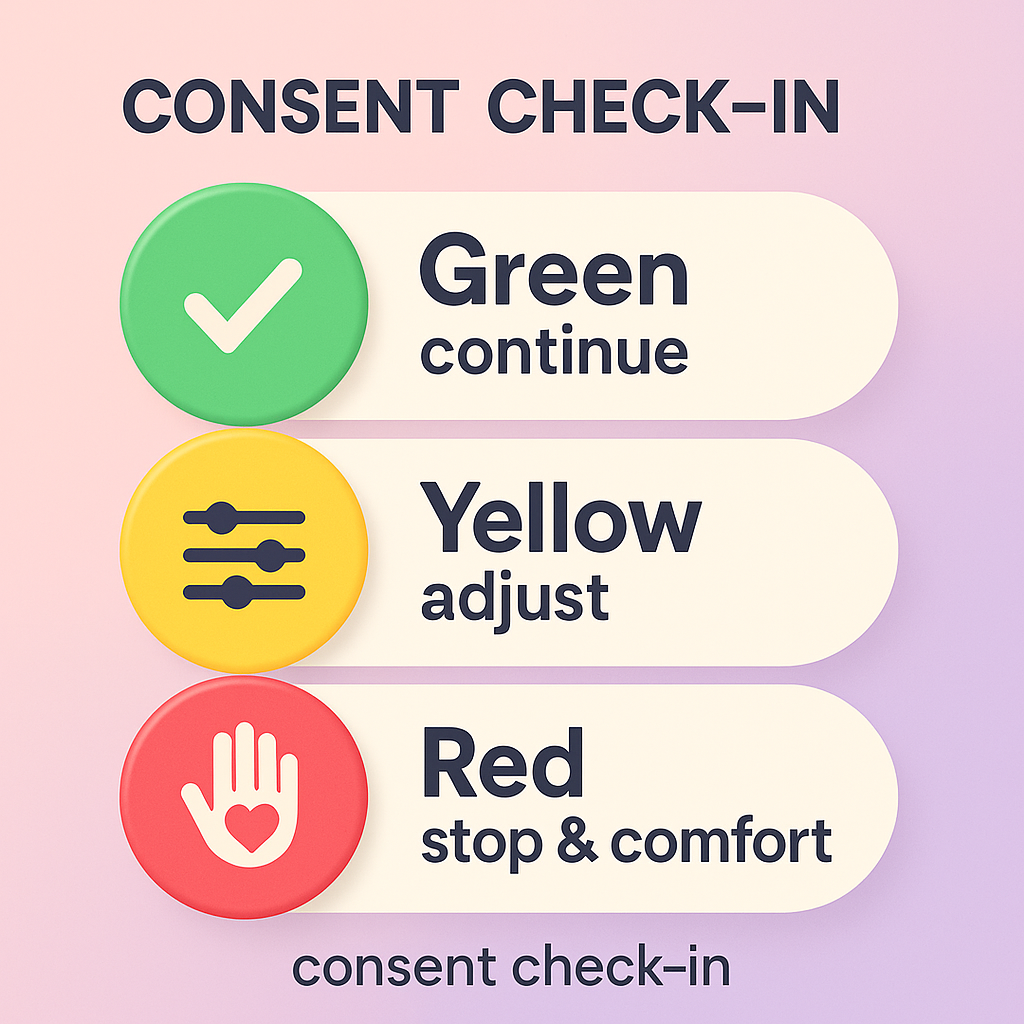
Consent & Communication Scripts for Mindful Sex
- Invite: “I’d love slow closeness. Open to a cuddle and seeing where we land?”
- Boundary: “I’m a yellow on that. Could we stay with this for now?”
- Preference: “Softer, slower—please stay there.”
- Aftercare ask: “Water and a cuddle after, or quiet time?”
For a simple consent framework, remember FRIES: freely given, reversible, informed, enthusiastic, and specific.
Sensate Focus: A Mindful Sex Exercise (SFW)
Sensate focus is a classic, low-pressure exercise designed to help you reconnect with touch.
Stage 1: Receive & Name Sensations
Set a timer for 10–15 minutes. One person receives touch while the other gives. The person receiving names three sensations per minute. There is no goal beyond noticing.
Stage 2: Alternate With Micro-Cues
Switch roles every 2–3 minutes. The person receiving touch can give short, one-word cues like “softer,” “slower,” or “pause.”
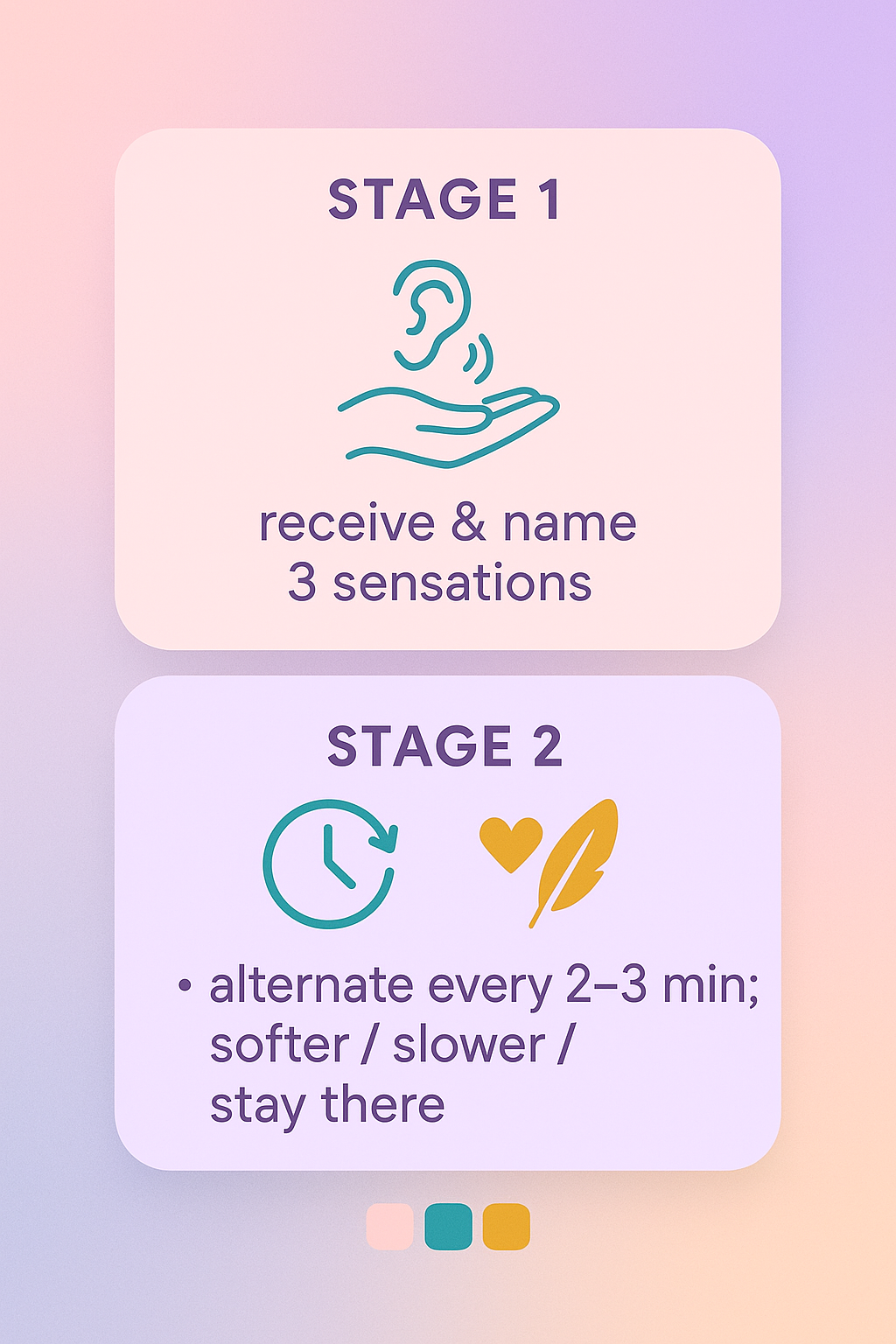
Troubleshooting Mindful Sex (Quick Fixes)
- Feeling pressure? Pause, breathe, and halve the pace.
- Racing thoughts? Ground with 5-4-3-2-1.
- Phone noise? Airplane mode. Dim lights.
- Pain or numbness? Stop and seek clinical advice.
- Triggered? Self-soothe, then choose comfort or a full stop.
Mindful Sex for All Bodies (Accessibility & Inclusion)
This practice is for everyone. It can be adapted for all bodies and abilities. Adjust positions for comfort or use timers, cards, or written menus if verbal communication is difficult. For neurodiversity, focus on what feels good, not on a set progression. Above all, always honor changing boundaries and communicate openly.
Download: Mindful Sex Checklist (Free)
Grab the one-page sheet with breath, grounding, the Touch Ladder, and scripts. It is light, clear, and printable.
Glossary
- Mindfulness: The practice of being present and aware of the current moment without judgment.
- Consent: Freely given, reversible, informed, enthusiastic, and specific agreement.
- Responsive desire: Sexual desire that arises in response to stimuli, touch, or a sense of emotional connection.
- Arousal non-concordance: When a person’s physical arousal does not match their mental or emotional arousal.
- Aftercare: The period of care and comfort after a sexual experience.
- Grounding: A technique to reconnect with the present moment and your physical body.
- Window of tolerance: A psychological state of emotional regulation in which a person can function most effectively.
Mindful Sex FAQ
Not exactly. There is overlap in breath and presence; however, Mindful Sex is a secular, evidence-informed approach.
No. Even 2–5 minutes before intimacy can help. Start small. Then build.




